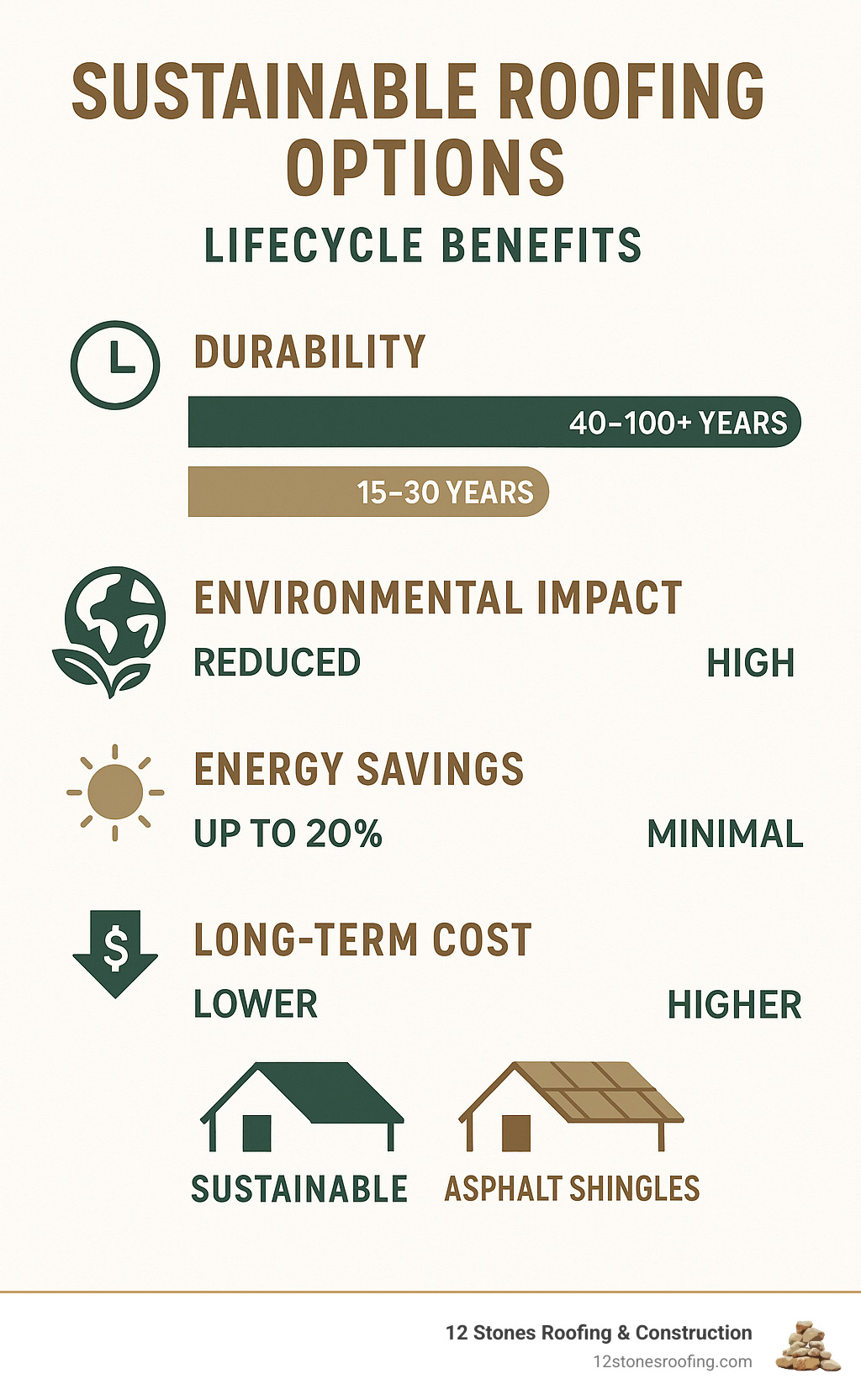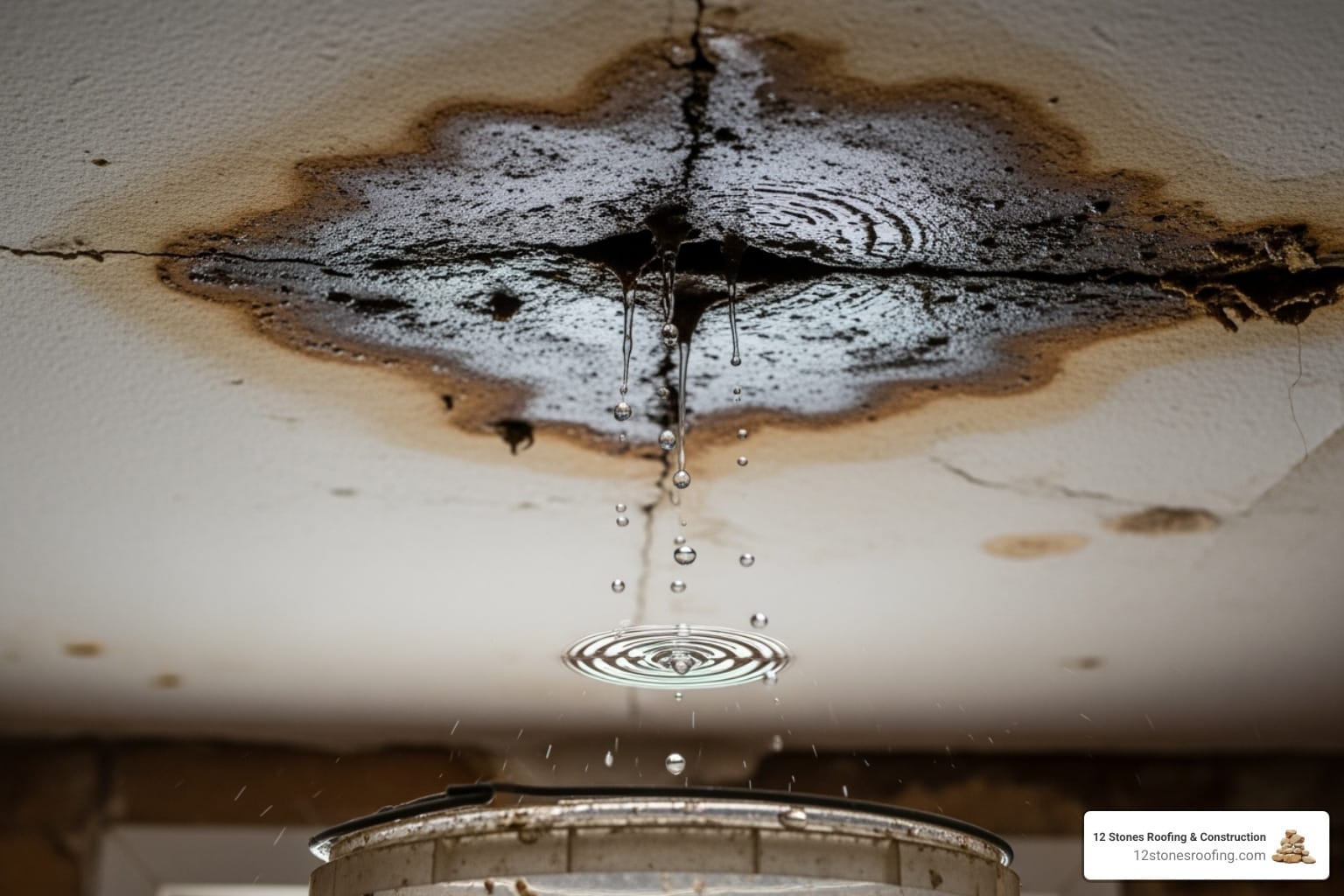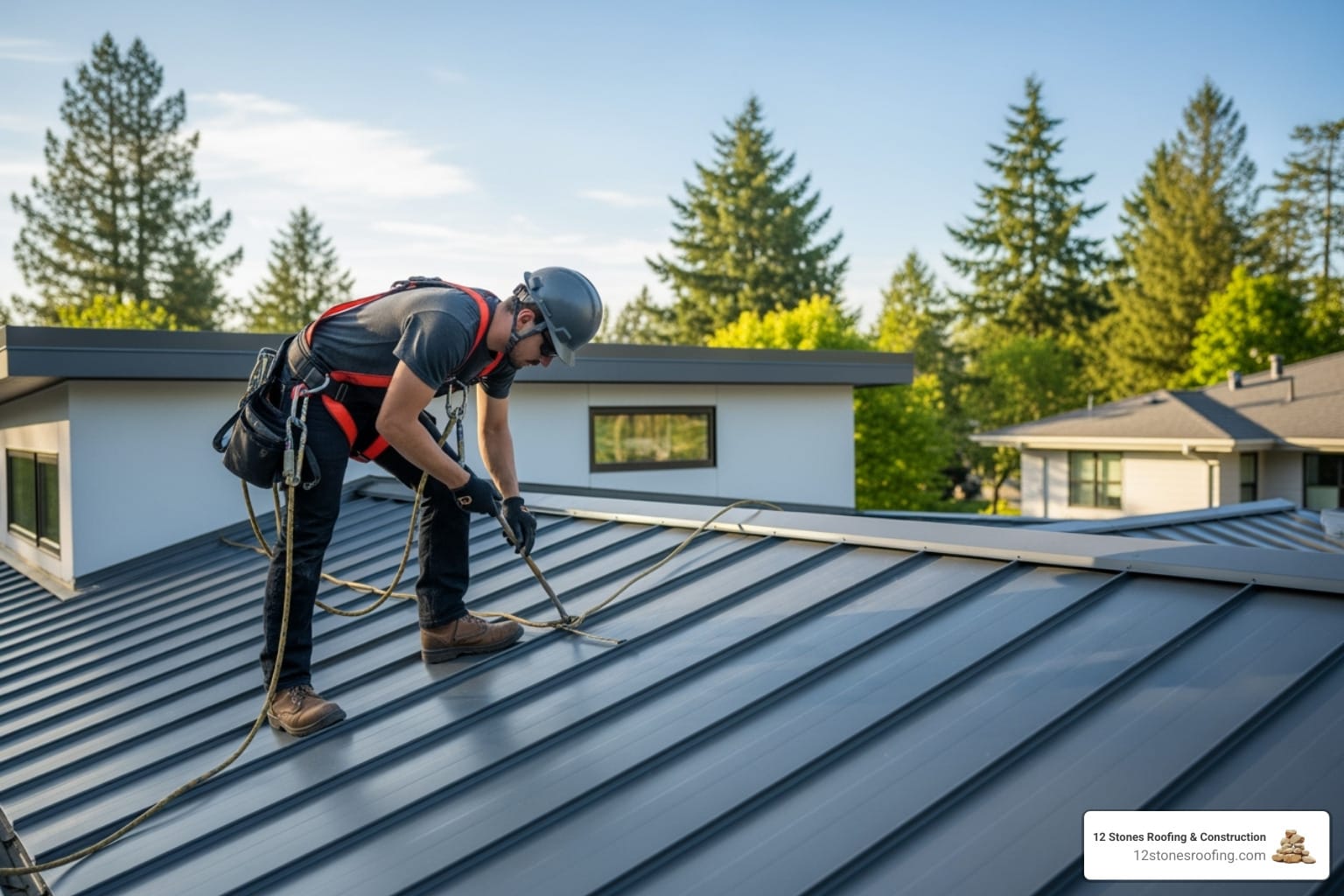Why Sustainable Roofing Options Matter for Your Home’s Future
Modern homeownership is evolving. Today, it’s not just about curb appeal and square footage; it’s about making smart, forward-thinking choices that improve long-term value, reduce running costs, and minimize environmental impact. This is where sustainable roofing options are becoming the clear choice for savvy homeowners who want to protect both their property and the planet. When the time comes for a sustainable roof replacement, opting for eco-friendly materials offers superior durability, significant energy savings, and a host of environmental benefits that traditional roofing simply can’t match.
The numbers tell a compelling story of waste in the conventional roofing industry. Traditional asphalt shingles, largely made from petroleum, contribute to an estimated 11 million tons of recycled material isn’t being reused piling up in our nation’s landfills each year. These shingles have a relatively short lifespan and are difficult to recycle, creating a cycle of waste. In stark contrast, innovative companies like Malarkey have diverted approximately 7 million rubber tires and 4.6 billion plastic bags from landfills by incorporating these materials into high-performance, sustainable shingles.
Top sustainable roofing options include:
- Metal Roofing: A champion of longevity, lasting 50+ years. It’s often made with significant recycled content and is 100% recyclable at the end of its life. Its reflective properties can drastically reduce cooling costs.
- Slate and Clay Tiles: These classic, natural materials can protect a home for a century or more. Sourced from the earth, they offer excellent insulation and are completely fireproof.
- Recycled Shingles: An innovative solution made from post-consumer plastic and rubber. These shingles divert immense amounts of waste from landfills while offering impressive durability and impact resistance.
- Living Roofs (Green Roofs): A layer of vegetation planted over a waterproofing system. They provide incredible natural insulation, manage stormwater runoff, combat the urban heat island effect, and create habitats for wildlife.
- Cool Roofs: These aren’t a specific material but a category of roofing designed to reflect more sunlight and absorb less heat. They can lower roof temperatures by over 50°F, reducing energy use by up to 25%.
For Texas homeowners facing intense sun, severe storms, and volatile energy costs, choosing a sustainable roof isn’t just an environmental statement—it’s a strategic financial investment that fortifies your home for decades.
Your Local Sustainable Roofing Experts in Pasadena
I’m Jason Roberts, owner of 12 Stones Roofing & Construction. For over a decade, I’ve been dedicated to helping Pasadena homeowners steer sustainable roofing options that are built to withstand the unique challenges of Gulf Coast weather. My hands-on experience with eco-friendly materials and energy-efficient installations has proven time and again how the right sustainable roof can transform a home’s performance, resilience, and monthly utility bills. If you’re considering a greener, more durable roofing solution, our team is here to provide the expertise you need.
12 Stones Roofing & Construction
Address: 6933 Olson Ln, Pasadena, TX 77505
Phone: (832) 815-9463

What Truly Makes a Roof Sustainable?
Not all roofs marketed as “green” are created equal. True sustainable roofing options go far beyond a single feature like color or recycled content. They are defined by a holistic approach that minimizes their environmental footprint from cradle to grave—from the moment raw materials are extracted all the way through to what happens when they’re eventually replaced decades later.
When evaluating sustainable roofing materials for your home, look at the complete picture through the lens of these key characteristics:
1. Lifecycle Assessment (LCA)
This is the foundation of sustainability. An LCA is a comprehensive analysis of a roof’s entire journey. It examines the environmental impacts at every stage: mining or harvesting raw materials, the energy used in manufacturing, emissions from transportation, the installation process, its performance and maintenance over decades of use, and finally, its disposal or recycling. A roof with a low LCA score consumes less energy, generates less waste, and causes less pollution throughout its life.
2. Raw Material Sourcing
The origin of a roof’s materials matters immensely. The most sustainable options use rapidly renewable resources, abundant natural materials like clay and slate, or high levels of post-consumer recycled content. Sourcing materials locally also earns major sustainability points by slashing transportation-related carbon emissions—a significant factor here in Texas, where goods often travel vast distances.
3. Recycled Content and Recyclability
Recycled content is a game-changer in modern roofing. Innovative shingles now incorporate recycled rubber from millions of old tires and plastic from billions of discarded bags, giving these waste materials a valuable second life. But the crucial question is: what happens at the end of the roof’s life? Materials like metal, which can be 100% recycled back into new high-quality products without degradation, create a “closed-loop” system. This is the gold standard of sustainability, as it moves us toward a circular economy and away from the linear “take-make-dispose” model.
4. Manufacturing Process Impact
The environmental toll of manufacturing varies dramatically. Cleaner production methods that run on renewable energy, consume less water, and emit fewer volatile organic compounds (VOCs) and other pollutants make a significant difference in a material’s overall sustainability profile. Transparent manufacturers are often proud to share information about their factory processes.
5. Energy Efficiency
This is where sustainable roofs truly prove their worth, especially in the Texas heat. Highly reflective “cool roofs” can bounce up to 80% of the sun’s rays away from your home, dramatically reducing the workload on your air conditioning system. This is measured by the Solar Reflectance Index (SRI). Additionally, materials with excellent natural insulating properties help maintain stable, comfortable indoor temperatures year-round, leading to direct and substantial savings on your utility bills.
6. Durability and Lifespan
This is perhaps the most critical,, aspect of sustainability. A roof that lasts 50, 75, or even 100+ years means fewer replacements over the life of the home. This translates to a massive reduction in material consumption, manufacturing energy, transportation emissions, and landfill waste over time. As we always tell our customers, the longest-lasting roof is almost always the most sustainable and cost-effective choice in the long run.
7. Certifications and Third-Party Labels
These labels help you cut through marketing jargon to identify genuinely sustainable products.
- LEED Certification: While buildings, not products, get certified, using certain roofing materials can contribute points toward a home’s certification under green building systems like LEED.
- ENERGY STAR®: This label is a trusted indicator of proven energy efficiency, particularly for cool roof products that meet specific solar reflectance and reliability standards.
- Environmental Product Declarations (EPDs): An EPD is like a nutrition label for a building product. It provides a transparent, independently verified report on a product’s lifecycle environmental impact, covering everything from global warming potential to water consumption. A manufacturer that provides an EPD is demonstrating a serious commitment to transparency and sustainability.
These characteristics work in concert to create roofing systems that protect your home, your wallet, and the environment for generations.
A Guide to Top Sustainable Roofing Options
When you’re exploring sustainable roofing options for your home, understanding the key differences between materials helps you make the smartest choice for your budget, aesthetic preferences, and the environment. Each eco-friendly option brings its own unique set of strengths, from unparalleled longevity to innovative, waste-reducing technologies. While the initial investment for these materials can range from moderate to high, their exceptional durability and energy efficiency often create significant long-term value, making them more economical over their lifetime than traditional asphalt shingles.
| Material | Lifespan (Years) | Initial Cost | Durability | Environmental Impact |
|---|---|---|---|---|
| Metal Roofing | 50-75+ | High | Excellent | Highly recyclable (often >25% recycled content), long lifespan reduces waste, cool roof options save energy |
| Slate & Clay | 50-100+ | Very High | Outstanding | Natural materials, minimal processing, extremely long lifespan reduces replacement waste |
| Recycled Shingles | 30-50 | Moderate-High | Very Good | Made from post-consumer waste, diverts materials from landfills, some offer air-purifying technology |
| Living Roofs | 30-50 | Very High | Good | Carbon sequestration, stormwater management, habitat creation, excellent insulation |
Metal Roofing: The Durable & Recyclable Champion
Metal roofing, available in materials like steel, aluminum, and copper, is a powerhouse of sustainability. With a lifespan of 50 to 75 years or more, it drastically reduces the need for replacements. Many metal roofs contain a significant percentage of recycled material, and at the end of their long service life, they are 100% recyclable. In the Texas climate, their greatest advantage is the availability of ‘cool roof’ finishes. These highly reflective surfaces can lower roof temperatures, leading to substantial energy savings on cooling. Furthermore, metal is lightweight, fire-resistant, and engineered to withstand hurricane-force winds and hail, making it a resilient choice for storm-prone areas.
Slate & Clay Tiles: The Natural, Century-Long Classics
For timeless beauty and ultimate longevity, nothing compares to slate and clay tiles. These materials are essentially crafted from the earth—slate from quarried stone and tiles from baked clay. Their lifespan can easily exceed 100 years, making them a true ‘once-in-a-lifetime’ roofing investment. This incredible durability means minimal waste and resource consumption over the long term. They are completely fireproof, resistant to rot and insects, and provide excellent natural insulation. The primary considerations are their higher initial cost and significant weight, which may require a structural assessment to ensure your home can support the load.
Innovative Shingles: Recycled & Smog-Reducing Technology
Offering a more traditional look with a modern, eco-friendly twist, recycled-content shingles are a fantastic sustainable option. These products are manufactured using post-consumer waste like rubber from old tires and plastic from bags and other packaging. This innovative process diverts millions of tons of materials from landfills, turning waste into a durable, protective asset for your home. Many of these shingles are engineered for superior performance, offering Class 4 impact resistance—the highest rating against hail damage. Some advanced versions even feature smog-reducing granules that use sunlight to convert nitrogen oxides (a major component of smog) into harmless nitrates.
Living Roofs (Green Roofs): A Biodiverse Solution
A living roof is more than just a covering; it’s a dynamic ecosystem. By planting a layer of vegetation over a specialized roofing system with waterproofing and drainage layers, you create a roof that offers unparalleled environmental benefits. It absorbs rainwater, reducing stormwater runoff that can overwhelm local drainage systems. It provides exceptional natural insulation, lowering heating and cooling costs. It improves air quality by filtering pollutants and converting CO2 into oxygen. And it creates a vital habitat for pollinators like bees and butterflies. While they require a significant structural investment and a dedicated maintenance plan, the benefits for both the homeowner and the community can be profound.





